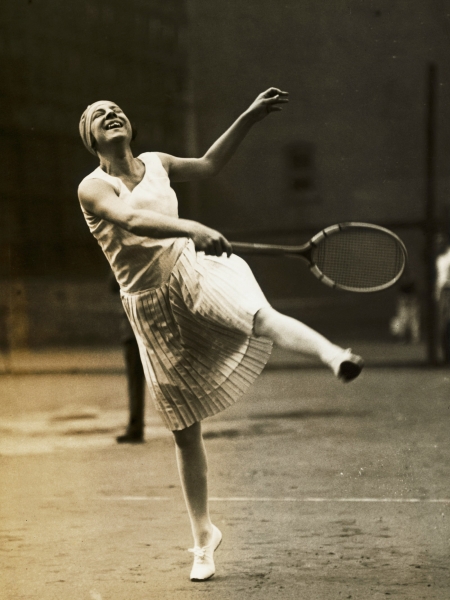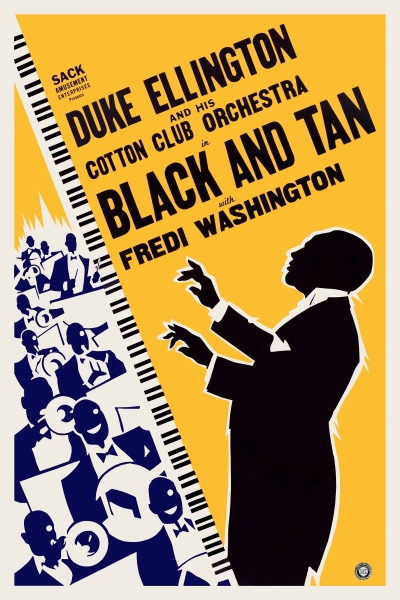Contents
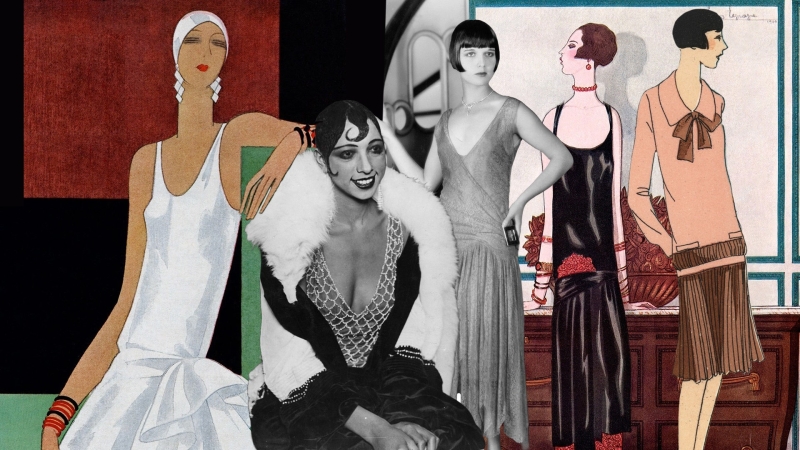
How did 1920s fashion help to make the Roaring Twenties roar? Bernice had bobbed her hair, French tennis star Suzanne Lenglen was fueling the sportif craze, the taste for all things Art Deco carried over into fashion, and Chanel had slipped women into something more comfortable—the Little Black Dress. The LBD was deemed such a closet mainstay that Vogue drew a comparison to Ford’s revolutionary Model T of 1908. In an article in our October 1, 1926 issue entitled “The Debut of the Winter Mode,” Vogue captioned a sketch of a black, long-sleeved frock that fell just below the knees: “The Chanel ‘Ford’—the frock that the world will wear is model 817 of black crepe de chine.”
On our covers, we celebrated the decade with illustrations from the likes of Georges Lepape, Benito, and William Bolin. A harmony of linear elements that appear plucked from the sketches of the forthcoming Chrysler Building, these illustrations helped feed the Art Deco frenzy. Fashion-wise, women were dressed in cloche hats, tubular silhouettes with drop waists, and handkerchief hemlines boldly skimming shins—which were on show for the very first time.
A breakdown of all these 1920s fashion trends and more, below.
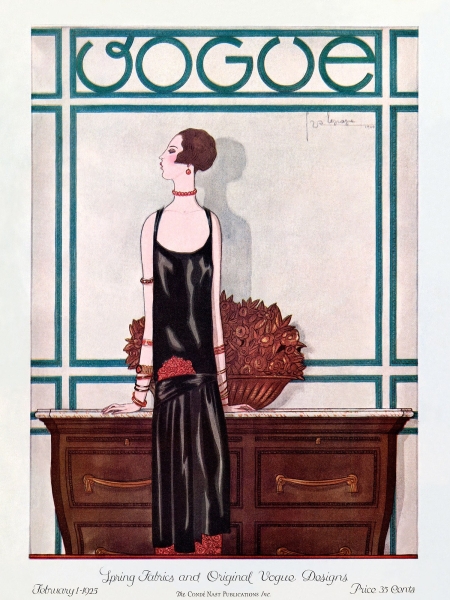

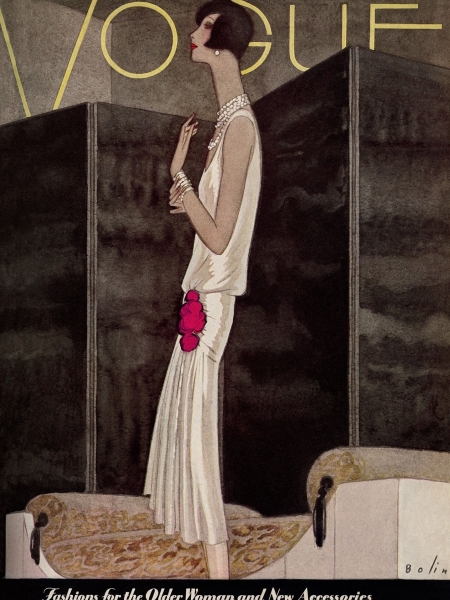
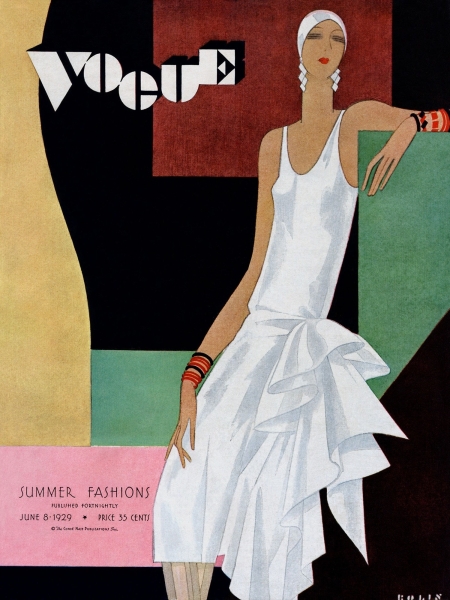
Women’s Trends of the 1920s
The Tomboy Look
Meet La Garçonne
While the archetypical woman of the 1920s wasn’t yet ready for a full-on menswear-inspired moment (that would take a few decades—about five, for Saint Laurent’s Le Smoking), she was here for the “La Garçonne” look—which was boyish, not manish. A play on words with the feminine article for the French "man" La Garçonne-style aimed to unsculpt the female body, with silhouettes that draped over her curves—no pinching or hugging. The look also called for a shorter hemline, which had previously been permissible only for young girls who could not yet embrace their femininity via fashion.
The house of Premet championed this aesthetic. In a February 1924 feature entitled “Interview with Couturiers,” Premet’s Charlotte Révyl remarked on the gendered balancing act of the La Garçonne look: “Nowadays, with cut hair, tiny hats pulled down over the eyes, bateau necks or other little collars, long sleeves, and boyish figures, we have absolutely nothing feminine left, unless we see the pretty slender ankles."
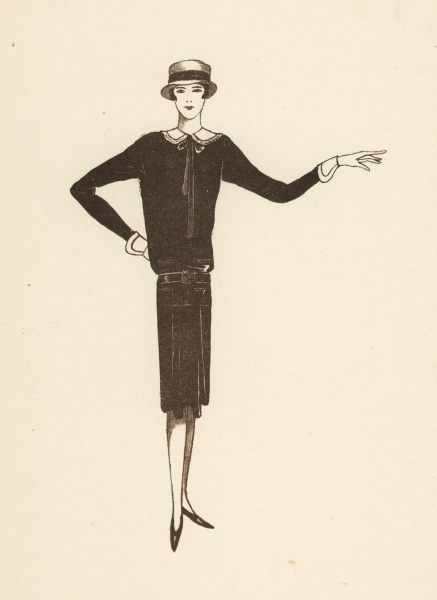
The Bob
The ’Do of the Decade
Even before F. Scott Fitzgerald cemented the bob as the ’do of the decade in his much-read short story "Bernice Bobs Her Hair," published in May 1920 in The Saturday Evening Post, the bold were test-driving the cutting-edge look. In 1915, dancer Irene Castle, who purportedly cut her hair for ease following a surgery, kept her ear-length hair in place on a headband across her forehead; it was such a distinctive look that it came to be known as the “Castle band.” Other memorable bobs belong to the vampy silent film star Louis Brookes, whose angular jet-black bob stole hearts in 1928’s Howard Hawks film A Girl in Every Port, and Josephine Baker, who slicked hers down with sculpted locks into Kiss curls.
The look wasn’t just for vixens of the screen and stage; it was a well-adopted style that went mainstream. By February of 1926, Vogue reported: “In a week of nights spent at smart restaurants in Paris or New York, one might never see a single distinguished head in the Lady Godiva tradition. The bob rules.”
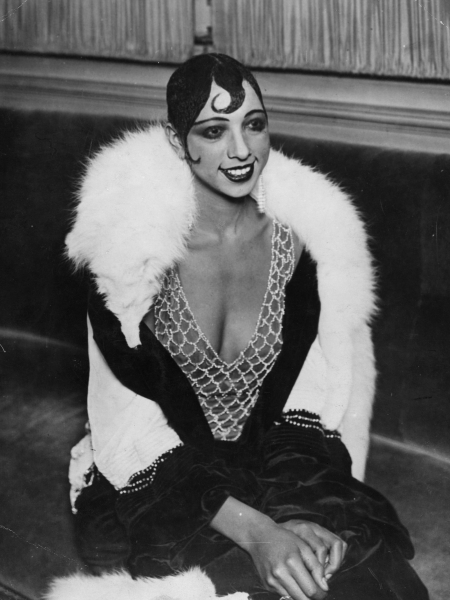
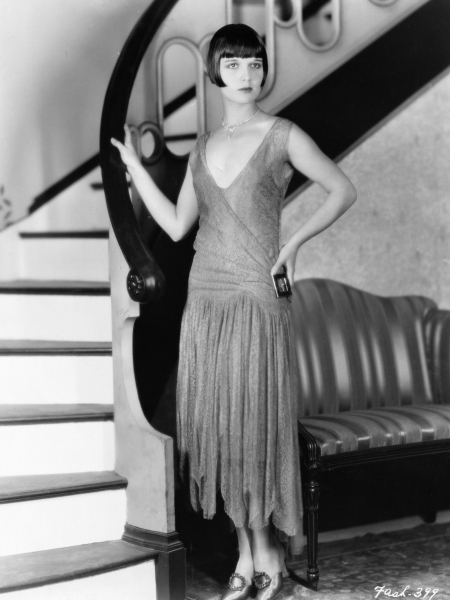
Skirt Hemlines Rose
Shins Were on Show
Nary a knee was on show during this era (it’s a common misconception that flappers wore dresses above the knee) though the daring flapper might have flashed them whilst seated! Hemline historians cite 1926 as the peak of this trend, with dresses and skirt hemlines rising; at first, skimming the ankles, then up the mid-shin, then just below the knee. All the while, flesh-colored stockings sheathed the leg.
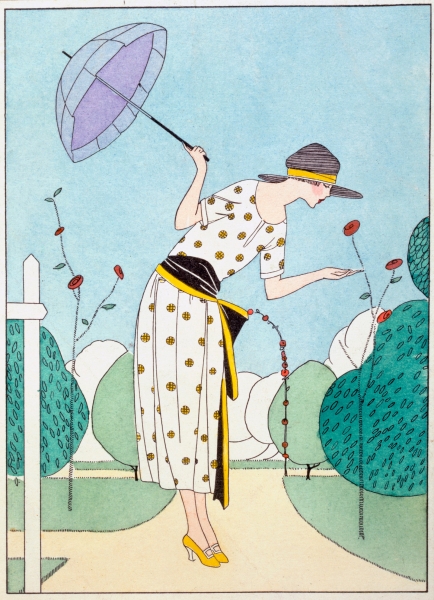
Flapper Style
What Was a Flapper, Anyway
Think of the descriptor of “flapper” as being synonymous with trendy. The flapper look was the prevailing trend, and flappers were those girls who dressed the part. But it’s a term with a bit of a backstory—some thought the term referred to youths who opted to unbuckle their galoshes, letting them flap with each step. Others trace “flapper” back to a Victorian term used to describe (clutch your pearls!) young prostitutes. It took some consideration to rebrand flapper. In 1917 Vogue titled an article “The Term ‘Flapper’ Carries No Stigma.” By 1920, Frances Marion released the film The Flapper, starring Olive Thomas and the rest was history. Every girl wanted to be a flapper.

The Cloche
A New Hat Style Came Calling
The fashionable lady of the 1920s wouldn’t step outside without her hat. Come nightfall, however, she’d leave it behind. Following the craze for oversized pancake hats in the 1900s, the 10s and 20s saw a gradual shrinking of ladies' hats into the coche style. Popularized by milliner Caroline Reboux in 1908, the hat style gets its name after the French word for “bell.” It was also the perfect pairing for the bob—a helmet-like hat for a helmet-like haircut.
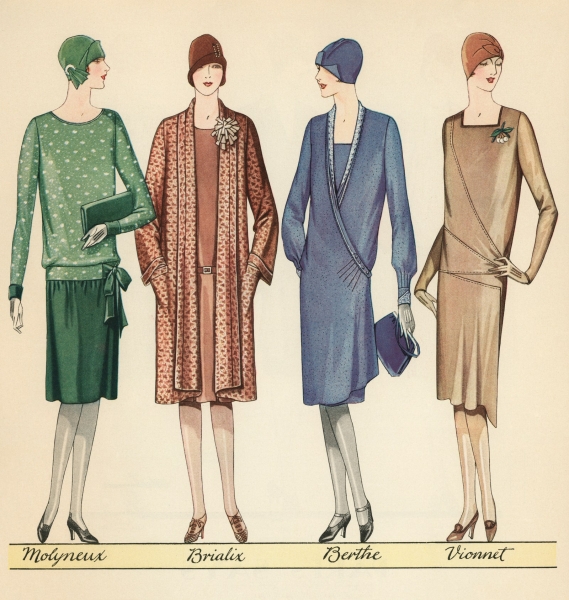
The Little Black Dress
ICYMI, Chanel’s LBD Revolutionized Wardrobes
Slick and sumptuously understated, Chanel’s 1926 little black dress in a crepe de chine was entirely modern. The look embraced black as a fashion color after a long and sorrowful history as the hue to mourn in. Plus, the LBD's unfussiness was a striking departure from previous modes. Fabric-wise, the silhouette Chanel put forth could be constructed in a variety of textiles, encouraging a democratization of couture look as it was very re-creatable. The look was such a mainstay; the little black dress was appropriate for day and eveningwear; jersey by day, chiffon by night—chic all day long!
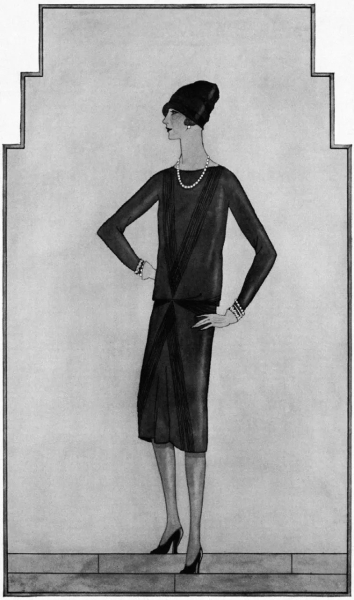

The Robe de Style
The Romance Silouette
Lesser celebrated, though no less prevalent, was another novel silhouette of the era dubbed the Robe de Style. In sync with the era, this silhouette showcased a bit of leg, but unlike the tubular look, there was a bit of body. The dress typically featured a gathered and expansive skirt but with zero waist on show. It reads as diaphanous, floaty, and highly feminine. French couturier Jeanne Lanvin is most associated with the Robe de Style, but she was one of many designers who offered a girlish alternative to the boyish La Garçonne look. In a 1923 feature on French actress and fashion darling Regina Camier, Vogue cites how “Aided and abetted by Lanvin…Camier made many converts to the Robe de Style.”
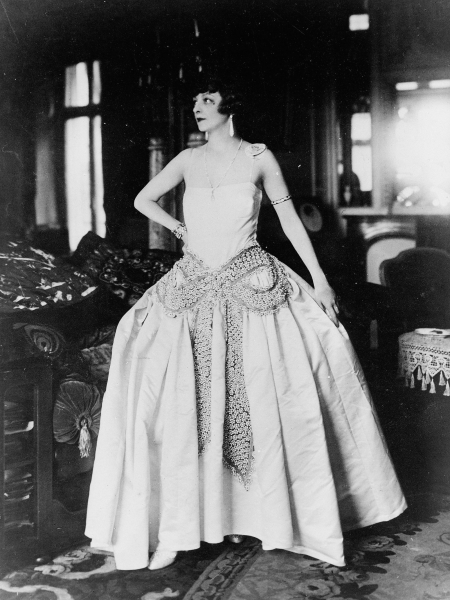
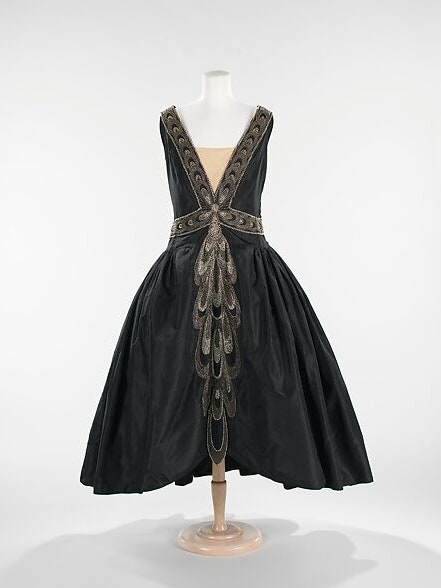
Top Designers of the Era
Gabrielle Chanel, Elsa Schiaparelli, Jeanne Lanvin, Callot Soeurs, Jean Patou, Madeleine Vionnet, Madame Chéruit, Paul Poiret, Norman Hartnell, Sonia Delaunay, Jane Regny, Jeanne Paquin, and Premet.
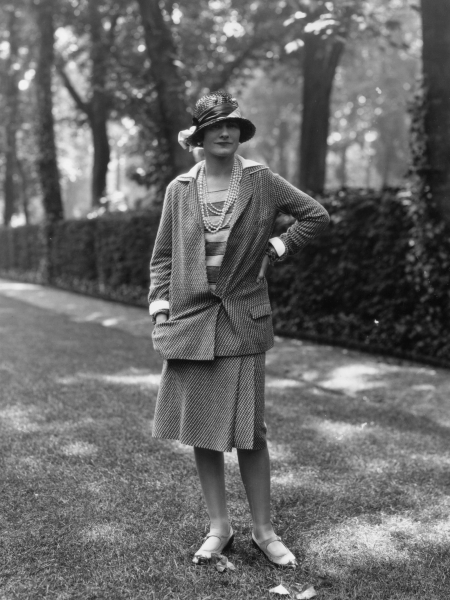
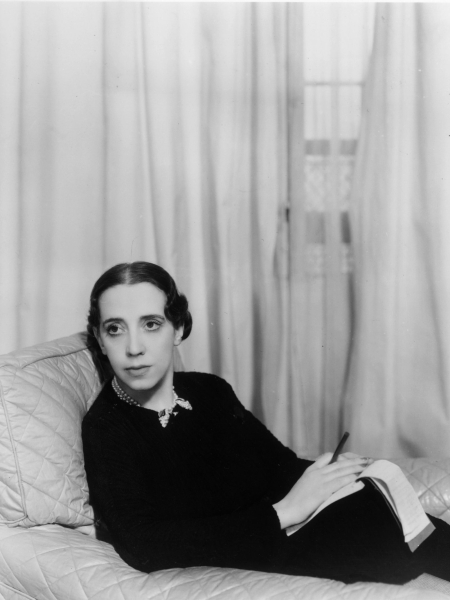
Men’s Trends of the 1920s
If, during this decade, Paris gave the final word in womenswear, London set the tone for men—particularly a certain gentleman by the name of Edward VIII, then Prince of Wales. Suits went down from three to two pieces, and pinstripes were a popular choice, as were tweeds and flannels; anything that evoked Savile Row tailoring and English country living, as epitomized by the Prince. Two pant trends uphold this tweedy aesthetic: the Oxford Bags (a wide-leg pant said to be inspired by those worn by rowers at Oxford) and the plus-fours (worn for golf). On their heads? A Magruitte-style bowler hat.

In the Culture
The Harlem Renaissance lit up the world and gave it something to listen to, with jazz musicians and bandleaders like Duke Ellington setting the soundtrack for the decade. A 1923 Broadway show, “Runnin’ Wild,” gave the world the jazzy dance ‘The Charleston,’ and over in Paris, at the Folies Bergère, Josephine Baker was holding court. Speaking of courts, in the world of tennis, French sensation Suzanne Lenglen teamed up with couturier Lucien Lelong to serve some major fashion looks that carried over into ready-to-wear.
